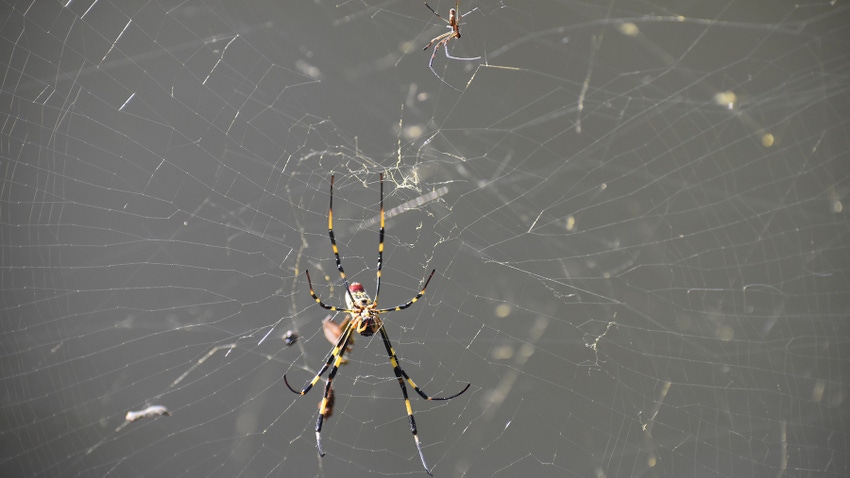
With Halloween rapidly approaching, a timely subject is the Joro spider, the Asian arachnid visitor that landed in Northeast Georgia a few years ago and has since proliferated into ubiquity.
I first noticed Joros in the late summer of 2021. At first, I thought they might be ordinary yellow garden spiders, but as I saw increasing numbers of their webs, I realized this was something different and began researching. Joros have now spread across the northern half of Georgia and into the Carolinas and parts of Tennessee, according to University of Georgia Extension. I suspect it is just a matter of time before they spread across the entire Southeast.
I’m not a scientist and by no means an arachnologist, but I have become fascinated with these spiders and have closely observed Joros for three summers. I’ve come to a few conclusions:
They are alarmingly fast, faster than any spider I’ve ever seen.
Joros are timid. They will scurry for cover if you poke their webs.
They are highly skilled engineers. Their orb webs are massive and filled with concentric circles.
Webs often take on a golden glow when the sun hits them just right. Many webs have support strands of spider silk that can stretch 15 feet or more.
Joros will sometimes build webs adjacent to each other. Just in my backyard, I’ve observed massive web complexes with half a dozen or more females and a like number of their submissive male partners.
Over these three years, I have disposed of several hundred annoying webs and their occupants, especially the ones connected to our house. I’ve opened our front door more than once to find the entryway encased in Joro silk. It is impossible to get rid of them all, so now I just concentrate on webs I find near my house. My current method, also suggested by UGA, is to collect the web with a leaf rake and step on the spiders when they hit the ground.
UGA Extension has reported researchers believe these invasive eight-legged creatures probably do not pose a threat to native species, but I remain unconvinced. I’ve rescued butterflies and bumble bees from horrible fates after they were caught in webs. I suspect the major threat is to pollinators. Their webs are incredibly strong and capable of even snaring small birds.
The Delta region, by most accounts, has not yet been invaded by Joros. I suspect it’s just a matter of time...perhaps by next summer. Females can produce up to 1,000 eggs before dying in late fall, according to UGA. So, it’s not likely they are going to disappear. Perhaps some natural predators will develop, likely birds that already feed on spiders. I’ve noticed webs that overnight become vacant, so I suspect that’s what may have occurred.
If you haven’t seen Joros around your yard, just give it some time. You will.
About the Author(s)
You May Also Like






